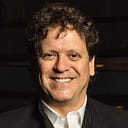Member-only story
The Music Plays On — Gruber Silent Night

Franz Xaver Gruber was a school teacher, church organist and composer who lived in the small Austrian village of Arnsdorf, just twelve miles north of Salzburg. Even today, calling Arnsdorf a village is a stretch. In fact, the two largest buildings are still the church and school where Gruber lived and worked, and where he probably wrote one of the most famous tunes ever written.
But how did this carol from the Austrian hinterlands achieve such worldwide recognition, becoming the most translated and sung carol in the world? Part of it certainly has to do with its simplicity and direct message, but a now forgotten Austrian folk singing family has to be given its due.
To this day, the Zillertal Valley in the Tirol region of Austrian prides itself in maintaining the folk singing traditions that have been in this alpine region for centuries. Singing in thirds or sixths (think Beach Boys, bluegrass, and yodeling) is a common trait throughout the Alps. The Rainer Singers were the Trapp Family Singers of the 19th century and their fame took them around the world. For their holiday show, they always would sing Stille Nacht. In fact, the Rainer Singers are still around…
In 1816, Gruber took on the responsibility of organist and choirmaster of the St. Nicholas Church in the neighboring village of Oberndorf bei Salzburg.

On Christmas Eve, 1818, Joseph Mohr, a catholic priest at St. Nicholas, showed Gruber a six-stanza poem, Stille Nacht that he had written in 1816 and asked Gruber if he could set it to music. Gruber returned the following day with the melody and for Christmas Mass, Mohr and Gruber sang in harmony, with Gruber playing the guitar as the organ had been damaged in a series of floods. The choir repeated the final two lines of each stanza. This very faithful recording uses Joseph Mohr’s guitar. For the German lyrics, please go to the end of this blog.
